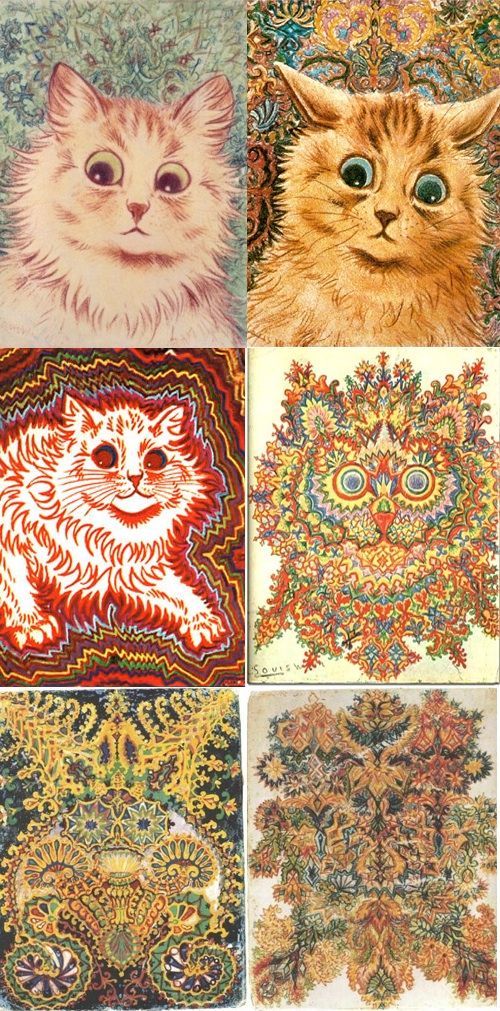 |
| Six paintings of cats by Louis Wain, shown as a group to illustrate their increasingly abstract and electric nature, attributed to his suffering from schizophrenia |
When I was eighteen, I had a passionate argument with my father about my life's priorities. I insisted that producing good art mattered above all else. Because I was a teenager who still boiled down everything to causative choices, I declared that I would happily die destitute if doing so meant I'd produce a few revelatory works in my lifetime. My father angrily dismissed my stance as romantic and foolish, but I held my ground (as is the wont of eighteen-year-old ideologues), and proclaimed that I'd sooner kill myself than create artwork for money or popular acclaim.
I've forgiven my teenage self his ridiculous pretension. He was just reflecting the prevalent narrative of the tortured artist, of the mad or misunderstood genius, and I appreciate the appeal of that account; we're storytelling animals. Unfortunately, we too often allow a compelling tale about an artist to trump our experience of the artwork he or she produced. We struggle to look at a painting by Henry Darger, Louis Wain, or Vincent van Gogh without foregrounding the artists' biographies, and the same is true of our dead-at-27 rock n' roll heroes.
This double-edged contextualization of artwork will be touched on in the course of BAASICS.3: The Deep End, albeit with a special focus on "outsider" or "visionary" artwork and the artists producing it.
Image credit: Wikimedia Commons

No comments:
Post a Comment